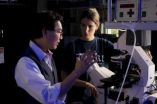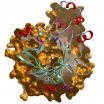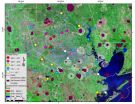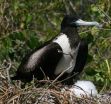(Press-News.org) PHILADELPHIA (September 28, 2010) – Scientists at the Monell Center have used a well-known example of individual differences to identify a genetic contribution to the sense of smell.
Most people detect a distinct sulfurous odor in their urine shortly after eating asparagus. However, there are some who seemingly do not notice the unpleasant odor.
Up until now, it has been unclear whether this is because these individuals do not produce the odor or because they cannot smell it.
Addressing this mystery from several angles, scientists from the Monell Center first used sophisticated sensory testing techniques to show that both explanations apply: approximately eight percent of the subjects tested did not produce the odorous substance, while six percent were unable to smell the odor. One person both did not produce the odor and was unable to smell it.
Next, DNA samples collected from each subject revealed that the inability to smell asparagus odor was linked to genetic variation within a family of olfactory receptors.
"This is one of only a few examples to date showing genetic differences among humans in their sense of smell," said study co-author Danielle Reed, Ph.D., a Monell behavioral geneticist. "Specifically, we have learned that changes in an olfactory receptor gene can have a large effect on a person's ability to smell certain sulfurous compounds. Other such compounds include mercaptan, the chemical used to add odor to natural gas so that people are able to detect it."
In the study, published online in the journal Chemical Senses, a total of 38 subjects each came to the laboratory on two separate occasions. One time they donated urine before and after eating roasted asparagus and the other time before and after eating bread.
The subjects next returned to the laboratory for sensory testing to determine their abilities both to produce and identify asparagus odor. Additional tests evaluated each subject's ability to smell the odor of rose to make sure that they had a normal sense of smell.
Results of the study also provide an example of ways in which normal people differ in their metabolism.
"Although seemingly just a curiosity, the individual differences in metabolism could be important in other realms," said study lead author Marcia Levin Pelchat, Ph.D., a sensory psychologist at Monell. "Additional studies are needed to determine whether the inability to produce the odor is associated with other metabolic traits or disorders."
INFORMATION:
Cathy Bykowski and Fujiko Duke also contributed to the research, which was supported by Monell Center institutional funds.
The Monell Chemical Senses Center is an independent nonprofit basic research institute based in Philadelphia, Pennsylvania. Monell advances scientific understanding of the mechanisms and functions of taste and smell to benefit human health and well-being. Using an interdisciplinary approach, scientists collaborate in the programmatic areas of sensation and perception; neuroscience and molecular biology; environmental and occupational health; nutrition and appetite; health and well-being; development, aging and regeneration; and chemical ecology and communication. For more information about Monell, visit www.monell.org.
END
HIV-infected individuals who begin antiretroviral therapy (ART) soon after acquiring the virus may have stronger immune responses to other pathogens than HIV-infected individuals who begin ART later, a new study from the National Institutes of Health has found. This finding suggests that early initiation of ART may prevent irreversible immune system damage and adds to the body of evidence showing significant health benefits from early ART.
Scientists from the National Institute of Allergy and Infectious Diseases, part of NIH, measured the quantity and qualities of B cells ...
Dairy farmers can greatly reduce ammonia emissions from their production facilities by injecting liquid manure into crop fields below the soil surface, according to research by the U.S. Department of Agriculture (USDA).
These findings, which resulted from a study conducted by soil scientist April Leytem and agricultural engineer David Bjorneberg with USDA's Agricultural Research Service (ARS), could help Idaho dairy farmers increase nitrogen capture in the soil and protect air quality from agricultural ammonia emissions. ARS is USDA's principal intramural scientific ...
DURHAM, N.C. – Duke University bioengineers have not only figured out a way to sneak molecular spies through the walls of individual cells, they can now slip them into the command center -- or nucleus -- of those cells, where they can report back important information or drop off payloads.
Using silver nanoparticles cloaked in a protein from the HIV virus that has an uncanny ability to penetrate human cells, the scientists have demonstrated that they can enter the inner workings of the nucleus and detect subtle light signals from the "spy."
In order for these nano-spies ...
A study conducted at Copenhagen University Hospital showed that treatment of rheumatoid arthritis (RA) with disease modifying antirheumatic drugs (DMARDs), glucocorticoids, biologic agents, or a combination of agents significantly reduced radiographic evidence of joint destruction, with a relative effect of 48%% as compared with placebo. A direct comparison between the combination of a biologic agent plus methotrexate and the combination of 2 DMARDs plus initial glucocorticoids revealed no difference. Study findings are published in the October issue of Arthritis ...
Social rejection isn't just emotionally upsetting; it also upsets your heart. A new study finds that being rejected by another person makes your heart rate drop for a moment. The study is published in Psychological Science, a journal of the Association for Psychological Science.
Research has shown that the brain processes physical and social pain in some of the same regions. Bregtje Gunther Moor, Eveline A. Crone, and Maurits W. van der Molen of the University of Amsterdam and Leiden University in the Netherlands wanted to find out how social pain affects you physically. ...
Results from a 12-month multi-center clinical trial did not show therapeutic benefit of abatacept over placebo in patients with non-life threatening systemic lupus erythematosus (SLE). Abatacept failed to prevent new disease flares in SLE patients tapered from corticosteroids in an analysis where mild, moderate and severe disease flares were evaluated together. Full details of the phase IIb clinical trial are published in the October issue of Arthritis & Rheumatism, a journal of the American College of Rheumatology (ACR).
The ACR estimates that 161,000 to 322,000 adults ...
The Structural Genomics Consortium (SGC), an international public-private partnership that aims to determine three dimensional structures of medically important proteins, announced today the release into the public domain of its 1000th high resolution protein structure.
The 1000th structure – known as JmjD2C – belongs to a class of proteins involved in epigenetic signalling, a key research area for the SGC. Epigenetics is the study of inherited changes in gene expression caused by proteins such as JmjD2C which 'switch' genes on or off. It is believed that a better understanding ...
HOUSTON, Sept. 28, 2010 – A large section of northwestern Harris County – particularly the Jersey Village area – is sinking rapidly, according to a University of Houston (UH) geologist who has analyzed GPS data measuring ground elevation in the Houston area.
Some points in Jersey Village are subsiding by up to 5.5 centimeters (about 2 inches) a year, said Shuhab Khan, an associate professor of geology at UH. Khan, along with UH geology professor Kevin Burke and former Ph.D. student and UH alumnus Richard Engelkemeir, studied a decade's worth of detailed GPS data measuring ...
In comments sent to Secretary Kathleen Sebelius at the U.S. Department of Health and Human Services, AMIA (American Medical Informatics Association) called out 10 specific challenges to proposed modifications to HIPAA Privacy and Enforcement Rules. AMIA's comments, sent on behalf of its membership of 4,000 informatics professionals, detail key issues of concern related to the Notice of Proposed Rulemaking (NPRM) on HIPAA modifications, along with suggestions for models of change. The following areas were cited:
Business Associates and Subcontractors
Position: AMIA ...
Although the magnificent frigatebird may be the least likely animal on the Galapagos Islands to be unique to the area, it turns out the Galapagos population of this tropical seabird may be its own genetically distinct species warranting a new conservation status, according to a paper by researchers at the Smithsonian Conservation Biology Institute, the Smithsonian's National Museum of Natural History and the University of Missouri-St. Louis published last week in the scientific journal Proceedings of the Royal Society B.
The Galapagos Islands, which once served as a scientific ...



